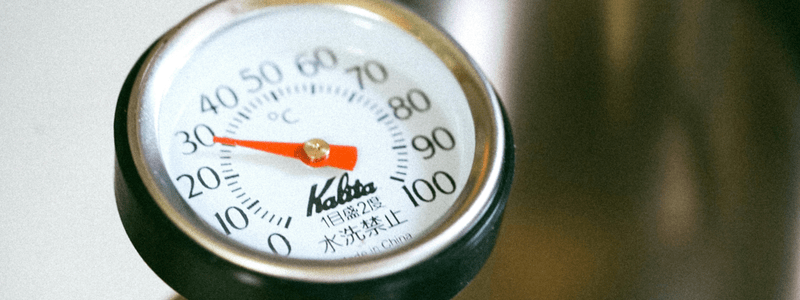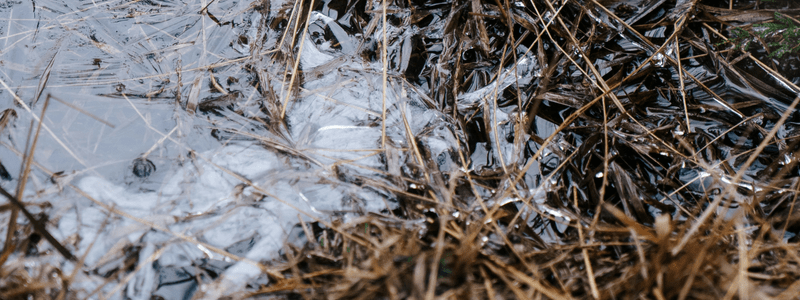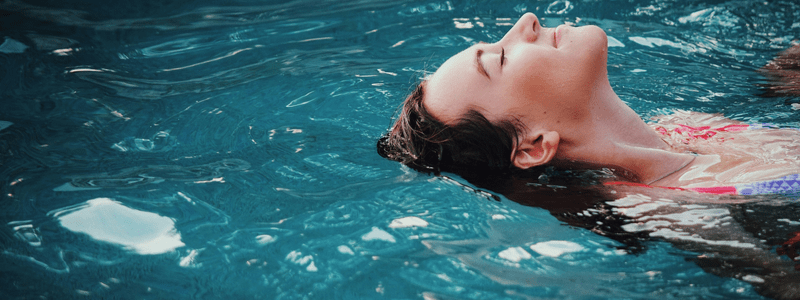Key Takeaways
Natural pools can be heated effectively without disrupting their ecosystem using gentle, eco-friendly methods like solar, geothermal, and heat pumps.
Heating extends usability beyond summer, enhances comfort, and supports wellness, making natural pools more inviting year-round.
The best heating methods for natural pools include solar covers or panels, heat pumps, wood-fired heaters, and geothermal systems.
Passive techniques like windbreaks, dark liners, and strategic pool placement help retain heat and boost energy efficiency.
It’s essential to maintain moderate temperatures (below 30°C / 86°F) to protect aquatic plants and beneficial microorganisms.
Choose a heating system based on climate, budget, sustainability goals, and how often you plan to use the pool.
Heating myths debunked: Natural pools can stay warm, be heated year-round, and remain cost-efficient with the right setup.

Natural pool heating. It sounds like a contradiction, right?
Yet, with the right systems in place, heating a chemical-free, eco-friendly pool is not only possible but increasingly popular. In fact, the global pool heating market is expected to grow by nearly 5% annually, driven largely by eco-conscious choices like solar and geothermal heating.
With a few strategic adjustments, you can create a naturally warm oasis without losing the green benefits of a natural pool. From solar heating to geothermal options and even some DIY-friendly methods, there’s a range of solutions that fit both the environment and your budget.
Let’s dive into the best ways to keep your natural pool warm, no chemicals required, and definitely no more chilly swims in the morning!
Can a Natural Pool Be Heated?
Absolutely! Although natural pools are designed to be chemical-free and rely on plants and biological filtration, they can indeed be heated without disrupting their delicate ecosystem.
Heating a natural pool does require thoughtful planning, as certain heating methods work better for maintaining the balance of plant life and microorganisms.
Options like solar, geothermal, and controlled heat pumps are ideal, as they provide gentle, gradual heating that aligns well with the eco-friendly design of a natural pool.
So, yes, with the right system, you can enjoy a warm, inviting natural pool all year long!

Why Heat a Natural Pool?
Adding heating to a natural pool may seem optional, but there are several reasons to consider it. For most, it’s about extending the swim season, increasing comfort, and accommodating all pool users. Here are some compelling reasons to think about heating for your natural pool:
Seasonal Use
Heating a natural pool can extend its usability well beyond summer, making it a cozy oasis from early spring through late fall. In cooler climates, a heated pool allows you to enjoy a dip even when the weather isn’t naturally warm, ensuring you get the most out of your investment.
Comfort Levels
Let’s face it: chilly water isn’t everyone’s idea of relaxing. A mild temperature increase can make your pool more enjoyable, especially for kids and guests who might be more sensitive to colder water. This added comfort makes a significant difference in how frequently your pool gets used.
Health Benefits
Warm water isn’t just a luxury. It’s beneficial. Heated water can aid in muscle relaxation, improve circulation, and reduce stress, making it a functional wellness feature in addition to a recreational one.
Family and Guest Appeal
A warm natural pool can make your space more inviting, encouraging family and friends to spend more time in the water. It’s especially helpful for young children and elderly family members, who often prefer warmer water.

Key Considerations for Heating a Natural Pool
Heating a natural pool requires thoughtful planning, as the wrong methods can disrupt the delicate balance of the pool’s ecosystem. Here are the primary considerations:
Maintaining Ecological Balance
A natural pool depends on a balanced ecosystem to keep the water clean, using plants and microorganisms rather than chemicals. Heat can impact this balance, so choosing a method that heats gradually and stays within safe temperature ranges (typically below 30°C or 86°F) is essential.
Temperature Control
Natural pools benefit from precise temperature control. Unlike traditional pools, overheating can disturb beneficial bacteria or plant life, so it’s important to monitor and adjust the temperature as needed. Setting an upper temperature limit helps protect the pool’s natural elements.
Energy Efficiency
Choosing an eco-friendly, energy-efficient heating method is crucial for natural pools, as owners often prioritize environmental sustainability. Fortunately, there are several options that use renewable energy and minimize the carbon footprint, including solar heating, geothermal options, and wood-fired systems.

Best Natural Pool Heating Options
There are several effective ways to heat a natural pool. Each method has its own advantages, whether in terms of cost, energy efficiency, or ease of use. Here’s a breakdown of the most popular heating solutions for natural pools.
1. Solar Heating Systems
Solar heating is a popular and sustainable choice for natural pools, as it relies on free, renewable energy from the sun. This option offers a range of setups, from solar covers to panel systems, making it versatile and suitable for a variety of climates.
Solar Pool Covers
A solar cover acts as both a heater and an insulator. It captures heat from the sun during the day and retains warmth overnight, preventing temperature loss. Solar covers are cost-effective, simple to use, and ideal for milder climates or as an additional heating method alongside other options.
Solar Panels
Installing solar panels to heat a pool is one of the most efficient ways to harness solar energy. These panels can be mounted on a roof or near the pool, capturing sunlight and using it to warm the water directly. Solar panel heating is more effective in sunny climates and requires a significant upfront investment, but it has minimal operational costs and a low environmental impact.
Pros and Cons of Solar Heating
- Pros: Renewable energy, minimal operational costs, effective in sunny climates.
- Cons: Dependent on sunlight, high upfront cost for panels, limited heating on cloudy days.
2. Heat Pumps
Heat pumps are highly efficient, using ambient air or ground heat to warm pool water. They come in two primary types: air-source and ground-source.
Air-Source Heat Pumps
Air-source heat pumps draw heat from the surrounding air and transfer it to the pool water. These systems are effective in moderate climates, where air temperatures don’t drop too low, and they operate efficiently throughout most of the year.
Ground-Source Heat Pumps
Ground-source (or geothermal) heat pumps draw heat from the ground rather than the air, providing a more consistent heating source. Although they’re more expensive to install, ground-source heat pumps are reliable and highly efficient in all climates.
Pros and Cons of Heat Pumps
- Pros: Energy-efficient, reliable heating in varying climates, good for year-round use.
- Cons: Higher upfront costs, installation complexity, may require additional power.
3. Wood-Fired Heaters
For those in rural areas or with access to sustainable wood, wood-fired heaters offer a natural, effective way to heat a pool.
How Wood-Fired Heaters Work
Wood-fired heaters work by burning wood to generate heat, which is then transferred to the pool water through a heat exchanger. These systems are highly effective, warming up the pool quickly and independently of weather conditions. However, they require manual labor and regular maintenance to keep the heater clean and running efficiently.
Pros and Cons of Wood-Fired Heating
- Pros: Cost-effective, doesn’t require electricity, works well in remote locations.
- Cons: Requires sustainable wood, regular maintenance, potential air pollution.
4. Geothermal Heating
Geothermal heating is one of the most sustainable heating methods, leveraging the earth’s natural heat to warm the pool. While similar to a ground-source heat pump, geothermal heating involves a more specialized setup, typically with underground piping and heat exchangers.
How Geothermal Heating Works
A geothermal system circulates water through pipes installed underground, absorbing heat from the earth and then transferring it back to the pool. This setup is eco-friendly, highly efficient, and able to provide stable temperatures year-round. While the installation cost is high, geothermal heating is ideal for long-term use and minimal impact on the pool’s ecosystem.
Pros and Cons of Geothermal Heating
- Pros: Stable heating source, minimal environmental impact, works in any climate.
- Cons: High upfront cost, requires suitable land for installation, complex installation process.
5. Passive Heating Techniques
Passive heating techniques, while not standalone solutions, are cost-effective methods to maximize warmth in a natural pool. These include using windbreaks, dark liners, and strategic pool placement.
Windbreaks
Installing fences, walls, or hedges around the pool can prevent heat loss due to wind, helping maintain water temperature without extra energy.
Dark Liners and Pool Design
Using a dark pool liner helps absorb and retain heat from sunlight, especially in sunny locations. Additionally, situating the pool in a sunny area maximizes natural warmth.
Pros and Cons of Passive Heating
- Pros: Low-cost, easy to implement, enhances other heating methods.
- Cons: Limited on its own, effectiveness varies by location.

How to Choose the Best Heating Option for Your Pool
Selecting the best heating method for your natural pool depends on several factors. Here’s what to keep in mind when making your choice.
Climate Considerations
Your local climate will heavily influence the best heating option. Solar heating works best in sunny regions, while geothermal or ground-source heat pumps are ideal in areas with temperature fluctuations.
Budget
Balancing upfront costs with long-term efficiency is key. Solar panels, heat pumps, and geothermal systems all require a significant investment but can offer savings over time. For a lower-budget option, passive heating techniques are worth considering as they require little to no upfront cost.
Environmental Impact
If sustainability is a priority, opt for solar or geothermal heating. Both methods minimize the environmental impact and support the eco-friendly nature of a natural pool.

Maintenance and Monitoring Tips for Heated Natural Pools
Maintaining the temperature of a natural pool requires careful monitoring to avoid disrupting the ecosystem.
Temperature Monitoring
Invest in a pool thermometer and monitor the temperature regularly. Keep the pool within a safe range to protect plant and microbial life, typically under 30°C (86°F).
Regular Heating System Checks
Routine checks ensure your heating system operates efficiently. Schedule seasonal inspections, especially before winter or peak summer months, to prevent unexpected breakdowns.
Seasonal Adjustments
Heating needs will vary by season. In summer, you may need minimal heating, while spring and fall may require additional warmth. Adjust your system accordingly to optimize energy usage.
Insulation and Heat Retention
Using pool covers, windbreaks, and strategic landscaping reduces heat loss, ensuring your pool remains warm while minimizing energy use.

Common Myths and Misconceptions About Natural Pool Heating
When it comes to heating natural pools, misconceptions are common. Let’s clear up a few.
“Heating Destroys the Ecosystem”
With mindful temperature control and the right heating system, warming a natural pool doesn’t have to disrupt its ecosystem. In fact, when kept within moderate ranges, heating can coexist with the plants and microorganisms that keep the pool clean.
The key is to choose a gradual, controlled heating method, like a heat pump or solar system, that won’t cause drastic temperature shifts.
“Solar Heating Isn’t Effective Enough”
Some assume that solar heating alone can’t keep a pool warm, especially in cooler climates. While solar heating can be limited by cloudy days, combining solar panels with a solar cover or using it alongside other methods (like passive heating) can make it surprisingly effective.
For areas with plenty of sun, solar can be a standalone option; for others, it’s an ideal supplementary solution to other heating methods.
“Heating Natural Pools Costs Too Much”
While it’s true that certain systems like geothermal or solar panels have a higher upfront cost, these systems are often highly efficient and pay off in the long run.
Plus, options like solar covers, wood-fired heaters, and passive heating are budget-friendly ways to add warmth without a massive investment. Choosing the right method for your climate and budget ensures the costs remain manageable over time.
“Natural Pools Can’t Stay Warm”
Natural pools are often associated with colder water because they lack traditional chemical heating. However, with the right heating system in place such as heat pumps, geothermal, or solar panels.
Natural pools can reach and maintain temperatures comparable to traditional pools. Modern heating technology has made it possible to enjoy consistently warm water even in a chemical-free environment.
“You Can Only Heat Natural Pools Seasonally”
A common belief is that heating natural pools is only practical for warmer months. However, many heating options, such as ground-source heat pumps or geothermal systems, can work year-round, even in colder climates.
By choosing the right system, you can extend your swim season or even keep your pool open year-round, depending on your climate and pool design.

Real-Life Case Studies
Seeing how others have successfully heated their natural pools can be inspiring and informative. Here are a few examples to illustrate how different heating methods work in real-world settings.
Eco-Friendly Success Stories
One homeowner in a sunny California neighborhood opted for a combination of solar panels and a pool cover to heat their natural pool.
Despite initial worries about sun dependency, they found the solar system kept the pool warm even in early spring, with the solar cover retaining heat well into the evening. Over time, they noted significant energy savings, reinforcing the value of solar heating in the right climate.
Comparative Experiences
A property in the northeastern U.S. used a heat pump combined with passive heating strategies, like a windbreak of native plants and dark liner installation. This setup allowed the pool to maintain comfortable temperatures even during autumn.
Another pool owner in a similarly chilly climate chose a wood-fired heater, which provided fast heating and a rustic touch, though it required more regular upkeep. Both cases highlight the versatility of heating methods and the importance of choosing based on personal preference and climate.

Conclusion
Heating a natural pool is a balancing act, but the rewards are worth it. By choosing a sustainable option like solar panels, a heat pump, or a wood-fired heater, you can extend your swim season, increase comfort, and do it all with a minimal environmental impact.
We’ve covered options for every climate, budget, and lifestyle, making it easier than ever to find a fit that’s both effective and eco-friendly. Ready to warm up that natural oasis? A few smart choices can turn your natural pool into a year-round retreat. Let’s keep things cozy!
Want to heat your natural pool the right way without harming the ecosystem?
Talk to us about eco-friendly pool heating solutions and get expert guidance tailored to your space, climate, and goals. No chemicals. No stress. Just year-round comfort done sustainably.
FAQ
Can I heat a natural pool?
Sure, but keep it natural! Think of solar covers, heat pumps, or even geothermal systems—it’s like giving your pool a cozy eco-blanket. Just don’t invite a bonfire; that’s too natural!
How can I keep my pool warm without a heater?
Turn your pool into a sunbather! Use a solar cover, or if you’re fancy, invest in some solar rings. Bonus tip: Plant trees strategically so your pool gets that perfect sunny spot—but not too much shade. Your pool deserves the VIP sun treatment!
How long does it take to heat a pool naturally?
Depends on how generous the sun feels that day! On a sunny day, expect your pool to warm up by 2-4°F in a day with a solar cover. No cover? The sun’s doing its best, but it’s like trying to warm soup with a candle.
Can you heat a pool with natural gas?
Absolutely! Natural gas heaters are like the espresso machines of pool heating—quick and effective. Just be ready for the energy bill; your pool might feel warm, but your wallet might sweat a little!



